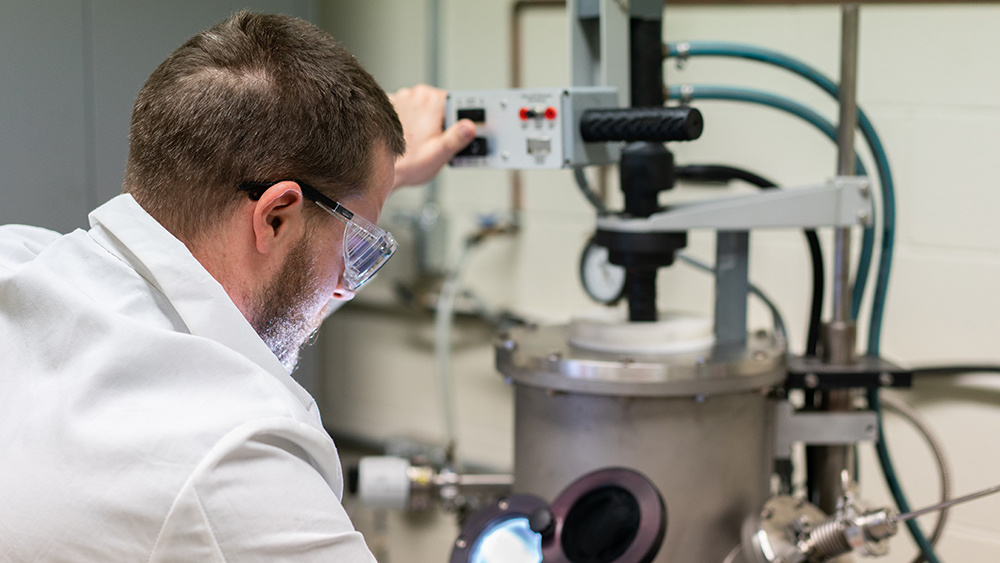
Those in the military face ongoing threats and dangerous environments that are constantly evolving. Many of these challenges must be addressed with technological innovations that require the development of new materials. Because of that, Texas A&M University, the University of California San Diego and the Georgia Institute of Technology have combined efforts to develop new approaches for the accelerated discovery of materials.
The development of these materials will enable the U.S. Army's equipment to better perform in environments that include high acceleration, high temperature, rapid ablation and high-velocity impacts.
Phase one of the High-Throughput Materials Discovery for Extreme Environments (HTMDEC) program started in July. The Texas A&M-led team, named Batch-wise Improvement in Reduced Design Space using a Holistic Optimization Technique (BIRDSHOT), is currently led by Dr. Raymundo Arróyave, materials science and engineering professor. BIRDSHOT, alongside a dozen other teams from universities and the Army Research Laboratory, has worked to develop concepts to address the HTMDEC challenge of identifying and deploying strategies to dramatically accelerate materials discovery.
“The reason why the Army thinks this is important is that they want materials that have a unique set of properties, such as very high strength, very low density, as well as resistance to extreme environments. These materials can in turn be used in technologies that help the warfighter while keeping them safe,” Arróyave said.
Traditional materials may be too heavy, weak or expensive to fabricate, and current technologies are not useful for addressing threats that the Army might face in the future.
"What we're trying to do is build a powerful framework for the accelerated discovery of advanced structural materials through a scientific collaborative effort," said Mrinalini Mulukutla, materials science and engineering doctoral student.
The center is to use machine learning and artificial intelligence in combination with advanced experimental and computational materials science methods as a way to enhance and accelerate the discovery of new materials capable of withstanding extreme conditions.
“This effort aims to build a center for the accelerated discovery and design of materials for applications to help the Army,” Arróyave said.
This approach presents the opportunity in exploring new frontiers for materials used in protection and applications when it is combined with datasets, computational tools and data infrastructure for collaboration, according to the U.S. Army Combat Capabilities Development Command website.
Arróyave said the first problem the team is trying to solve is to discover new compositionally complex alloys with high strength at high rates of deformation.
“I am responsible for integrating knowledge gained from a variety of experiments, simulations and expert opinions,” Mulukutla said. “We use advanced active learning techniques, allowing machine-learning algorithms to select a few next-best experiments out of a sea of possible experiments. We are looking for a needle in a multidimensional haystack, and we want to do it faster than everybody else in the world.”
Currently, this trial period will focus on the first alloy discovery problem and try to come up with a different combination of metals that is the best for this particular application.
After the first phase is complete, the research could lead to the university housing a HTMDEC research center. From there, the Army could add another four years of research funding and possibly extend the contract further.
“The discovery and development of new materials takes decades. Clearly, this is too slow given the rapid pace of technological change. Together, we are trying to revolutionize the way this problem is solved,” Arróyave said.
This is a collaborative effort between researchers at Texas A&M University, who include Dr. Ibrahim Karaman, Dr. Ned Thomas, Dr. George Pharr, Dr. Dimitris Lagoudas, Dr. Ankit Srivastava and Dr. Douglas Allaire. Dr. Surya Kalidindi from Georgia Institute of Technology and Dr. Ken Vecchio from the University of California, San Diego are also participating in this research.